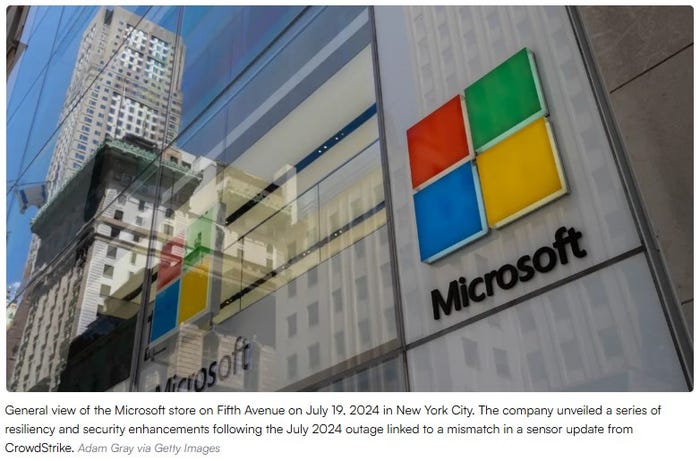In defense of 800MHz private radio
Covering 200,000 square miles in 11 states with 258 repeater sites, the private trunked radio system operated by American Electric Power, Columbus, OH, is one of the largest in North America. AEP has estimated the value of its wireless communications infrastructure at $100 million.
April 1, 2002
Covering 200,000 square miles in 11 states with 258 repeater sites, the private trunked radio system operated by American Electric Power, Columbus, OH, is one of the largest in North America. AEP has estimated the value of its wireless communications infrastructure at $100 million.
AEP uses the radio system to support construction and maintenance associated with its 38,000 miles of electrical transmission lines and 186,000 miles of distribution lines that serve more than 4.8 million customers. The company generates 38 billion watts of electricity in the United States.
Large companies with private radio systems normally reserve their political capital to fight battles affecting their core businesses. Congress and regulatory agencies hear from utilities about financial deregulation and environmental questions. Steel companies lobby legislators about tariffs. When it comes to making a case before the FCC, they don’t throw their weight around as much as some radio communications industry associations would like.
When Nextel Communications, Reston, VA, asked the FCC to reallocate spectrum from 700MHz to 2.1GHz in a way that would disrupt private radio users in the 800MHz band and lay upon them a huge expense for reconfiguring or replacing their systems, it roused AEP.
David B. Trego, vice president of telecommunications at AEP, said that AEP has been engineering and operating land mobile radio systems for more than 50 years. The company built its 800MHz system in the past 10 years. It continues to engineer improvements to the system and expects to add 20 base stations within the next two years.
The complex radio network that offers advanced wide-area voice and data communications services to mobile, portable and base station radios is “not a simple patchwork,” Trego said.
Although AEP recognizes the importance of public safety LMR communications systems, the company has asserted that utility-owned LMR systems are also critical to the safety and welfare of the general public. Trego wrote in a letter directed to FCC Chairman Michael K. Powell that utility LMR systems are used to dispatch workers in the repair of facilities and restoration of electric service and to coordinate the daily operation of electrical transmission and distribution systems.
Trego pointed out that without proper and timely coordination of operations, restoration and repair functions, communities that utilities serve could be negatively affected. Moreover, LMR systems enhance worker safety in some of the harshest and most dangerous working conditions.
Nextel, meanwhile, has attempted to partner with utilities or to persuade utilities to use Nextel for utility dispatching functions with “very little success,” Trego said. AEP, for example, finds that it must operate a private radio communications network to meet the safety and operational requirements of the electric utility business. Commercial wireless networks are not an option because of limitations related to coverage, availability, reliability and wide-area dispatching.
Referring to Nextel’s failure to attract utility business and the fact that its reallocation proposal would offer no compensation to non-public safety entities that would be forced to relocate to other frequency bands, Trego said, “One could view Nextel’s proposed realignment as retaliatory in nature.”
Trego characterized the proposal as “nothing more than a veiled attempt by Nextel to sidestep their responsibility to resolve interference caused by their operations.” Trego cited FCC regulation 90.173(b), which requires licensees to take reasonable steps to avoid creating harmful interference, and he referred to precedent in placing responsibility on Nextel to fix interference that its operations cause to other licensees even when its operations fall completely within its authorized channels.
AEP wants the FCC to hold Nextel solely accountable and not to divert the responsibility by forcing business and industrial/land transportation systems to move to frequencies in the 700MHz and 900MHz bands.
“Such a move by AEP would be extremely costly as well as enormously disruptive to ongoing utility critical operations,” Trego said. He explained that it would require replacing all radio equipment on the AEP network, including mobile and portable units and base station components such as repeaters, combiners, antennas and tower-top amplifiers.
Even moving to another portion of the 800MHz band would be an enormous logistical task of retuning and reprogramming a large number of radios dispersed over a large geographical area while trying to maintain normal utility operations, Trego indicated.
Trego didn’t overlook Nextel’s suggestion that business and industrial/land transportation radio communications system users that relocate to the 700MHz or 900MHz bands should be forced to contribute to a fund to help to pay for the relocation of public safety radio system users. “Completely unacceptable” is how he described it. “The cost of correcting harmful interference should be borne by those causing it, not those experiencing it,” he said.
That Nextel would reap a windfall in the form of contiguous 800MHz spectrum next to the cellular band and 10MHz of spectrum next to the PCS band at 2GHz wasn’t lost on Trego, but he pointed out that Nextel hasn’t publicly acknowledged the pot of gold. It’s worth “far more than the $500 million they are offering” to relocate public safety, he said.
Moreover, Trego said that Nextel’s windfall would be paid for by taxpayers who would fund the public safety relocation costs and by consumers through higher prices of goods and services provided by business and industrial/land transportation licensees when they pass along their relocation costs.
Besides the financial effects on business and industrial/land transportation radio users, Trego said that Nextel’s plan has other flaws. For example, Nextel does not hold licenses in the 700MHz and 900MHz bands in all parts of the country, including parts of AEP’s service territory. Also, where TV stations have analog-broadcasting facilities on 700MHz frequencies licensed to Nextel, those frequencies won’t be unencumbered until the stations shut down those operations in favor of their new digital channels. That transition may not be completed until 2006 or later.
At 900MHz, the FCC requires operations on 12.5kHz channels, but AEP uses 25kHz channels at 800MHz. A conversion would reduce its mobile data system throughput.
Washington telecommunications attorney and MRT regulatory consultant Robert H. Schwaninger Jr. said that Nextel “is finessing the fact that it has failed to construct any facilities on either 700MHz or 900MHz channels” as required to maintain its license under the terms of its authorizations. “Therefore, Nextel has not ‘perfected’ its title to those channels, which it would use as trading stock,” he said.
Those additional considerations aside, Trego said that the main point is that Nextel alone should be called on to correct the interference, not the 800MHz business and industrial/land transportation radio system users. “Any plan that would shift the burden away from Nextel would not be in the public interest and would set a dangerous precedent for the future,” he said.
Bishop is editorial director. His email address is [email protected].
AEP Facts
Some facts about American Electric Power’s 800MHz radio communications system as of Jan. 2, 2002:
One of the largest private trunked radio systems in North America
Covers 200,000 square miles in parts of 11 states
58 trunked radio sites
Exceeds original design criteria of 90% availability over 90% service territory (200,000 square miles)
132 integrated computer dispatch consoles
7,256 mobile units
3,889 portable radio units
601 mobile data users
Other 800MHz private radio users
In a letter to FCC Chairman Michael Powell, several associations expressed their opposition to a forced relocation of their systems to other frequency bands. The associations were:
Aeronautical Radio, Inc (ARINC)
American Petroleum Institute
American Association of Railroads
Forest Industries Telecommunications
Industrial Telecommunications Association
United Telecom Council
They cited a sampling of 800MHz systems that would be forced to absorb the relocation costs — in excess of $350 million. The associations suggested that the relocation cost to all displaced 800MHz incumbent private radio users would exceed several billion dollars.
Federal Express — FedEx has spent more than $100 million for its nationwide 800MHz internal communications system used to coordinate its package-delivery couriers, to provide maintenance and security ground support to aircraft, and to assist in the loading and unloading of aircraft and trucks. The system supports more than 40,000 mobile units and 750 base stations. A replacement system in either the 700MHz or 900MHz bands would cost FedEx an estimated $100 million or more.
ARINC — ARINC, Annapolis, MD, has constructed a new digital service at nine airports using Motorola’s IDEN technology. The new system is integrated with ARINC’s existing nationwide and global communications networks to support all ground operations, including baggage handling, maintenance and airport security. The company plans to install the system at all of its major domestic and international airports. It has already spent $13 million for its digital system, which could not be retuned to operate in either the 700MHz or 900MHz bands. ARINC further estimated that it has $1 million in embedded invested infrastructure at each of the remaining top 50 airports. Each system supports 3,000 to 5,000 mobile radios, which cost $600 to $1,000 each. ARINC estimated the full cost of relocating the 800MHz systems at more than $160 million.
The letter emphasized that the costs would be imposed on users who are not causing interference to public safety systems and who have assumed additional safety-related responsibilities since Sept.11, 2001. “Indeed, the protection of critical infrastructures, which has been a significant focus of recent Congressional and the Executive Branch activities, is an effort that would be seriously harmed through the implementation of this proposal as submitted,” the document reads.
The associations expressed concern that Nextel is trying to unfairly solve an interference problem of its own making at the expense of private wireless users. They pledged to work with public safety radio system users, Nextel and the FCC to help to resolve cases of interference. But they want a more balanced and equitable solution that would recognize that “a wholesale disruption to 800MHz private wireless systems would threaten the U.S. economy and the protection of its workers and citizens.”



